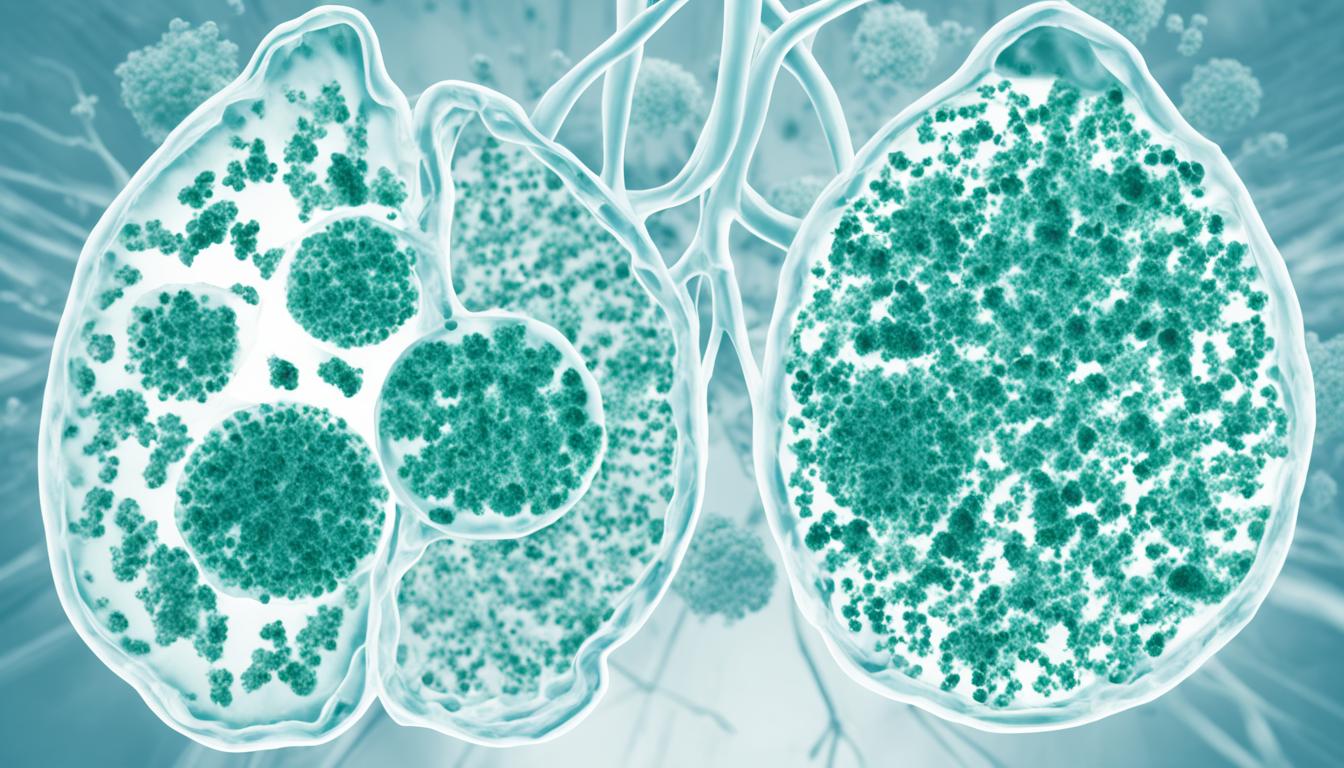Mold allergy is common, causing symptoms ranging from mild to severe. Inhaling mold spores triggers an immune response that can lead to allergies. Mold types like alternaria, aspergillus, cladosporium, and penicillium are allergy-causing culprits.
Having a family history of mold allergy or working in mold-heavy jobs increases your risk. Living in damp, poorly ventilated homes or frequenting wet areas like bathrooms boosts your chances. Mold allergy symptoms vary but often include sneezing, a runny nose, coughing, itchy eyes, and asthma. Severe complications are possible, like dangerous asthma attacks or allergic fungal sinusitis.
Preventing mold allergy involves eliminating home moisture sources and keeping humidity under 50%. Using air conditioning with HEPA filters and ensuring good bathroom ventilation helps too.
Key Takeaways:
- Mold allergy can cause a range of symptoms, from mild to severe.
- Certain types of mold, such as alternaria, aspergillus, cladosporium, and penicillium, are known to cause allergies.
- Risk factors for mold allergies include family history, certain occupations, living in a house with high humidity or poor ventilation, and exposure to wet areas.
- Symptoms of mold allergy can include sneezing, a runny nose, coughing, itchy eyes, and asthma.
- To prevent mold allergy, eliminate sources of moisture, maintain humidity below 50%, use air conditioning with HEPA filters, and ensure proper ventilation in bathrooms.
Diagnosis and Treatment of Mold Allergy
Diagnosing a mold allergy starts with seeing a doctor. They will check you carefully and ask about your health history. You might need allergy tests like skin pricks or blood tests.
After finding out you have a mold allergy, your treatment depends on how it affects you and your health. The main aim is to reduce symptoms and make life better.
Avoiding mold is a big part of treatment. You can help by getting rid of mold at home, keeping the air dry with a dehumidifier, and making sure your house is well ventilated. Doing these things can lower your chances of getting allergy symptoms.
If your symptoms are still bad, your doctor may give you some medicines. These can be antihistamines, nasal sprays, decongestants, or asthma drugs. They are meant to make you feel better if you react to mold.
But, if you still feel bad, even after taking medicines and making changes to your life, you could try allergy shots. These shots help your body get used to mold slowly. This can make your symptoms less serious over time.
Sometimes, regular treatments don’t help. In those cases, your doctor might talk to you about options like stem cell therapy. This treatment can help fix the damage from mold and make you feel better.
Remember, everyone’s mold allergy is different. It’s key to work with an allergy expert for the best care. They can make a plan just for you that really works.
Conclusion
Mold allergy affects many people and can show different symptoms. The body reacts to mold spores in the air, causing allergic responses. Alternaria, aspergillus, cladosporium, and penicillium are some common molds that trigger allergies.
Several things can make mold allergy more likely. These include family history, jobs with lots of mold, living in humid or poorly vented homes, and being around damp spaces. These factors help mold spores grow and cause allergies.
The signs of mold allergy can vary. They might include sneezing, a runny nose, cough, or itchy eyes. In serious cases, it can even lead to bad asthma attacks. A doctor will do a checkup and tests to confirm a mold allergy.
For treatment, people can try to avoid mold, take medicine, or even consider new therapies. It’s vital to see a doctor if you think you have a mold allergy. This way, you can get the right diagnosis and care. Knowing about mold allergy helps people reduce their risk, manage symptoms, and live better.

